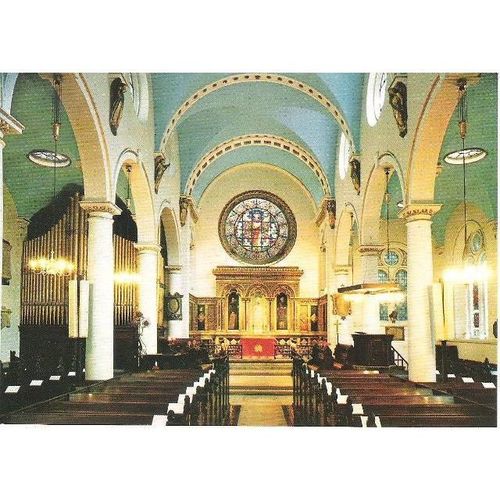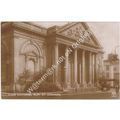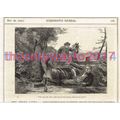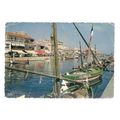London - St. Michael's Church, Cornhill, the City - postcard c.1970s
- Condition : Used
- Dispatch : 2 Days
- Brand : None
- ID# : 130101374
- Quantity : 1 item
- Views : 249
- Location : United Kingdom

- Seller : justthebook (+1699)
- Barcode : None
- Start : Wed 09 Jul 2014 17:01:50 (BST)
- Close : Run Until Sold
- Remain : Run Until Sold
More Listings from This Seller view all
Seller's Description
- Postcard
- Picture / Image: St. Michael's, Cornhill, City of London
- Publisher: Beric Tempest
- Postally used: no
- Stamp: n/a
- Postmark(s): n/a
- Sent to: n/a
- Notes / condition:
Please ask if you need any other information and I will do the best I can to answer.
Image may be low res for illustrative purposes - if you need a higher definition image then please contact me and I may be able to send one. No cards have been trimmed (unless stated).
------------------------------------------------
Postage & Packing:
Postage and packing charge should be showing for your location (contact if not sure).
No additional charges for more than one postcard. You can buy as many postcards from me as you like and you will just pay the fee above once. Please wait for combined invoice. (If buying postcards with other things such as books, please contact or wait for invoice before paying).
Payment Methods:
UK - PayPal, Cheque (from UK bank) or postal order
Outside UK: PayPal ONLY (unless otherwise stated) please. NO non-UK currency checks or money orders (sorry).
NOTE: All postcards are sent in brand new stiffened envelopes which I have bought for the task. These are specially made to protect postcards and you may be able to re-use them. In addition there are other costs to sending so the above charge is not just for the stamp!
I will give a full refund if you are not fully satisfied with the postcard.
----------------------------------------------
Text from the free encyclopedia WIKIPEDIA may appear below to give a little background information (internal links may not work) :
*************
St Michael, Cornhill, is a medieval parish church in the City of London with pre-Norman Conquest parochial foundation. The medieval structure was lost in the Great Fire of London, and replaced by the present building, traditionally attributed to Sir Christopher Wren.[1][2] The upper parts of the tower are by Nicholas Hawksmoor. The church was embellished by Sir George Gilbert Scott and Herbert Williams in the nineteenth century.
The church of St Michael was in existence by 1133. The patronage was in the possession of the Abbot and convent of Evesham until 1503, when it was settled on the Drapers Company. A new tower was built in 1421, possibly after a fire. John Stow described the church as ""fair and beautiful, but since the surrender of their lands to Edward VI, greatly blemished by the building of four tenements on the north side thereof, in the place of a green church-yard"". On the south side of the church was a churchyard with what Stow calls a ""proper cloister"", with lodgings for choristers, and a pulpit cross, at which sermons were preached. These were maintained by Sir John Rudstone, after whose death in 1530 the choir was dissolved and the cross fell into decay.[3]
The medieval church, except for the tower, was destroyed in the Great Fire of London in 1666, and the present building was begun in 1672.[1] The design is traditionally attributed to Sir Christopher Wren.[1][4] However, the authors of the Buildings of England guide to the City churches believe Wren's office had no involvement with the rebuilding of the body of the church, the parish having dealt directly with the builders.[2] The new church was 83 feet long and 67 feet wide, divided into nave and aisles by Doric columns, with a groined ceiling. There was an organ at the west end, and a reredos with paintings of Moses and Aaron at the east. The walls, George Godwin noted, did not form right-angles, indicating the re-use of the medieval foundations.[1]
The fifteenth-century tower, having proved unstable, was demolished in the early eighteenth century. A 130-foot high replacement was completed in 1721. In contrast to the main body of the church, it was built in a Gothic style, in imitation of that of Magdalene College, Cambridge.[1] Construction had began in 1715, with money from the coal fund.[4] The designer was of the lower stages was probably William Dickinson, working in Christopher Wren's office.[2] Funds proved inadequate, and work stopped in 1717. The tower was eventually completed with the aid of a grant from the Commission for Building Fifty New Churches, the upper stages being to the designs of its surveyor, Nicholas Hawksmoor.[4]
In the late 1850s, the Drapers Company, motivated by legislation that would have forced them to hand certain funds over to the Ecclesiastical Commissioners if they were not spent on St Michael’s, decided to fund a lavish scheme of embellishment, and asked George Gilbert Scott to carry out the work.[5]
Scott added an elaborate Gothic porch (1858–1860) facing Cornhill.[6] It is decorated with carving by John Birnie Philip, which includes a high-relief tympanum sculpture depicting ""St Michael disputing with Satan"".[7] Scott inserted Gothic tracery to the circular clerestory windows, and into the plain round-headed windows on the south side of the church. New side windows were created in the chancel, and an elaborate stone reredos, incorporating the paintings of Moses and Aaron from its predecessor, was constructed in an Italian Gothic style. A contemporary account of the work explained that this was appropriate since “the classical feeling which pervades the Italian school of Gothic art enabled the architect to bring the classical features of the building into harmony with the Gothic treatment which our present sympathies demand“.[5] The chancel walls were lined with panels of coloured marble. up to the level of the top of the reredos columns, and richly painted above this point.[5]
Stained glass by Clayton and Bell was installed, with a representation of Christ in Glory in the large circular east window. Its splays were enriched with inlaid and carved marble, with four heads in high relief enclosed in medallions. The other windows contained a series of stained glass images illustrating the life of Christ, with the crucifixion at the west end.[5]
A further campaign of medievalising decoration was carried out in the late 1860s by Herbert Williams, who had worked with Scott on the earlier scheme. Williams built a three bay cloister-like passage, with plaster vaults, on the south side of the building, and in the body of the church added richly painted decoration to Wren's columns and capitals. The reredos was enriched with inlaid marble, and the chancel was given new white marble steps and a mosaic floor of Minton’s tesserae and tiles. In what the Building News described as a ""startling novelty"" a circular opening was cut in the vault of each aisle bay and filled with stained glass, and skylights installed above.[8]
Few original furnishings were retained in its Victorian re-imagining, but the 1672 font given by James Paul survived, although a new balustrade was added.[9]
The church escaped serious damage in the Second World War and was designated a Grade I listed building on 4 January 1950.[10] In 1960 the Victorian polychrome paintwork was replaced with a more restrained colour scheme of blue, gold and white.[2]
A new ring of twelve bells, cast by Taylors of Loughborough, was installed in the tower in April 2011.[11]
The church has one of the oldest sets of churchwarden's records in the City of London, which are now kept in the Guildhall Library.
type=printed
london borough=city of london
period=post-war (1945-present)
postage condition=unposted
number of items=single
size=continental/ modern (150x100 mm)
Listing Information
| Listing Type | Gallery Listing |
| Listing ID# | 130101374 |
| Start Time | Wed 09 Jul 2014 17:01:50 (BST) |
| Close Time | Run Until Sold |
| Starting Bid | Fixed Price (no bidding) |
| Item Condition | Used |
| Bids | 0 |
| Views | 249 |
| Dispatch Time | 2 Days |
| Quantity | 1 |
| Location | United Kingdom |
| Auto Extend | No |




 for 1 item(s)
for 1 item(s)
















